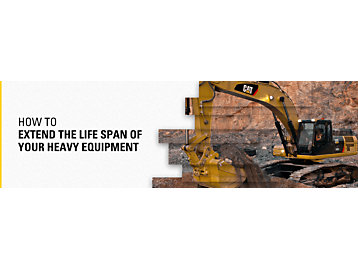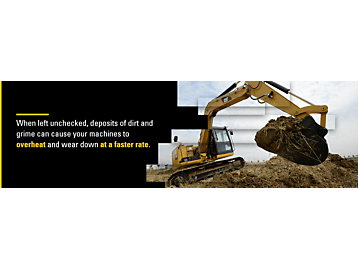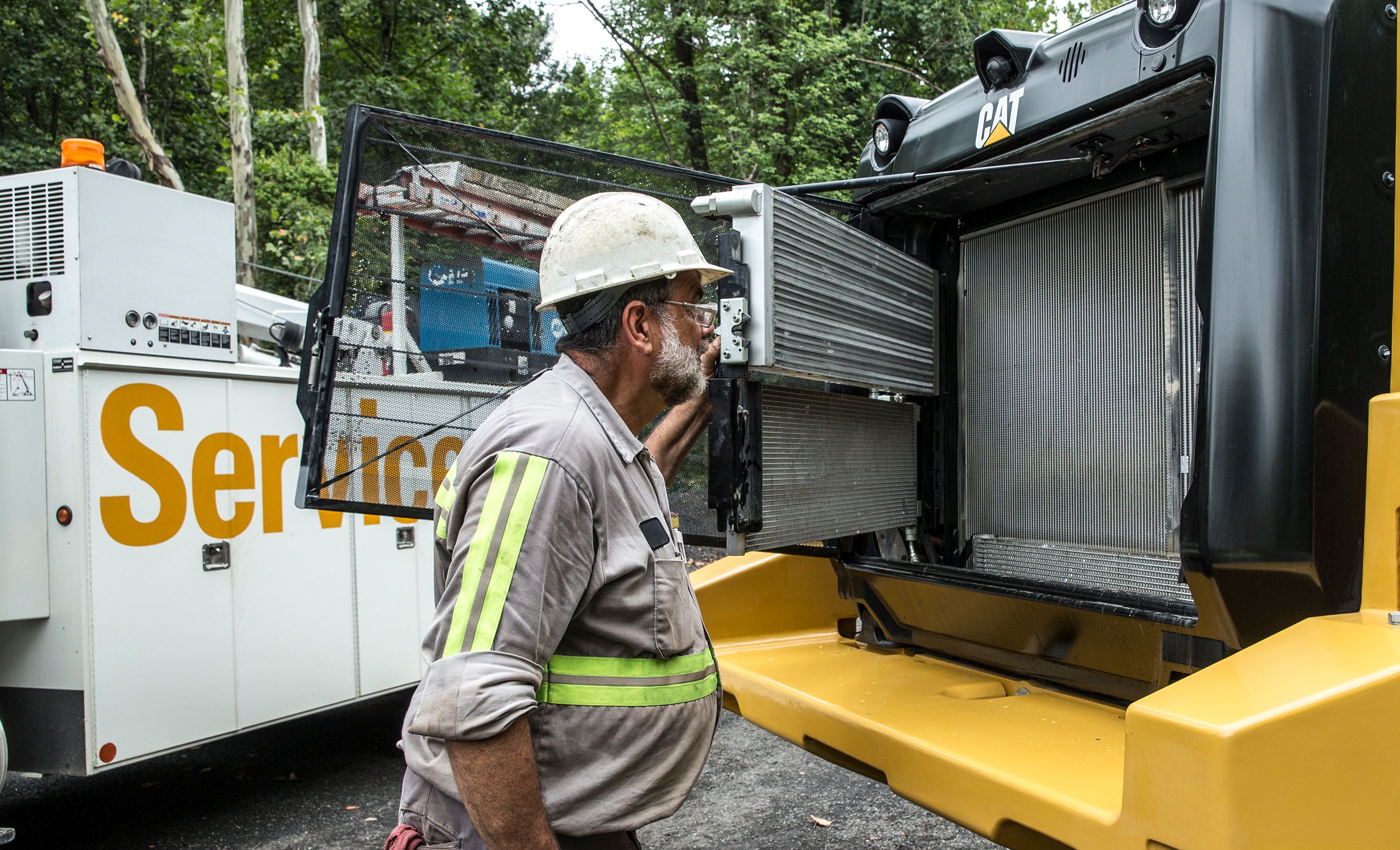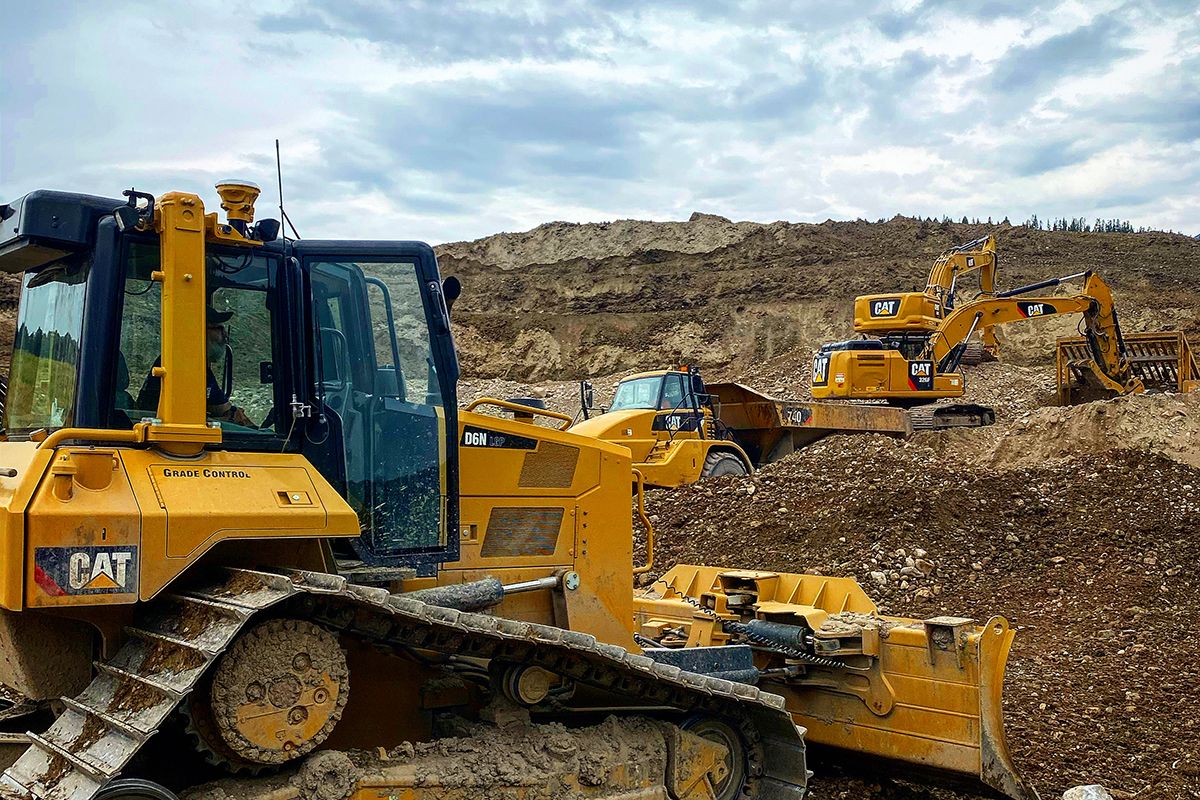

Sign In
Welcome! Sign In to personalize your Cat.com experience
If you already have an existing account with another Cat App, you can use the same account to sign in here
Register Now
One Account. All of Cat.
Your Caterpillar account is the single account you use to log in to select services and applications we offer. Shop for parts and machines online, manage your fleet, go mobile, and more.
Account Information
Site Settings
Security
Author: Small Business Expert | November 22, 2021 | Topic: Used Equipment

Heavy equipment is a significant investment, and to turn a profit, you need to make it last. Whether your equipment is new or used, monitoring your fleet's condition through regular preventive maintenance is a necessary measure to extend the lifetime of your machinery.
The Importance of Heavy Equipment Maintenance
If you want to get the most out of your heavy machinery, you need to keep a careful eye on its condition and act quickly whenever you notice something off. Implementing routine upkeep procedures can provide the following benefits:
- Higher efficiency: Regular preventive maintenance can prevent breakdowns by solving issues before they get worse. This proactive approach will allow you to reduce downtime and keep your projects on track.
- Increased job safety: When working with heavy machinery, any kind of operational failure may represent a significant safety hazard. Keeping your equipment in proper working order can save lives.
- Reduced costs: It's cheaper to fix minor issues when they first arise than waiting for them to disrupt your operation. Frequent maintenance checks can help you and your team spot these issues and cut down on costs.
6 Tips for Extending the Life Span of Your Heavy Equipment
Of course, these benefits are only possible through committed maintenance efforts from everyone who deals with the machinery regularly. To get you started, here are six maintenance tips to extend your equipment's life.
1. Provide Comprehensive Training
Offering training to both your technicians and operators can help to extend the life of your machinery and improve the productivity of your operation. Your staff should receive both in-house and dealership training so they can stay up-to-date on new technologies and procedures. This training is especially important for your operators since they work directly with the equipment and are most likely to find minor problems.
Additionally, training programs demonstrate the proper way to use your equipment. Improper usage can lead to unintentional damage, so the people operating the machines on a daily basis should have a thorough idea of what they're doing. By minimizing the chance of incidents that could result in machine damage, you can reduce your repair bills and make your equipment last longer.
2. Perform Daily Checks
Create a daily checklist of maintenance tasks for your heavy equipment operators to complete at the beginning or end of the workday. Quick checks can identify signs of internal wear to address them before they turn into an issue.
Your list should include anything that could change from day to day, such as:
- Brakes and brake fluid
- Horn
- Lights
- Hydraulic fluid levels
- Transmission fluid
- Gauges
- Tire pressure
Require your operators and technicians to submit their completed checklists at the end of each day and review them. Keeping a dedicated file for your maintenance documents can help you create a working history for each unit so your mechanics will be better prepared to approach each repair job.
3. Conduct Regular Deep Cleanings
It's important to clean your equipment inside and out to remove contaminant buildup. When left unchecked, deposits of dirt and grime can cause your machines to overheat and wear down at a faster rate. Removing caked-on dirt can also reveal small imperfections like scratches and cracks that could become major issues later.

Dedicate time every few hundred hours to thoroughly scrub your machines down. Force dirt from hard-to-reach areas using high-pressure hoses. For more delicate parts like chains and bearings, you'll need to use specialized techniques. Follow your manufacturer's directions to properly clean your unit.
4. Implement a Condition-Based Maintenance Program
Combined with your regular scheduled maintenance procedures, a condition-based maintenance (CBM) program can help identify signs of wear before they become problematic. The main component of CBM is fluid analysis.
First, you need to determine who will be responsible for these analyses. You have three options here:
- Your staff, if you have the proper materials at hand
- A third-party laboratory
- Your dealer, if they offer this service
It's vital to perform fluid analysis at regular intervals. You can maximize efficiency by taking fluid samples during standard maintenance procedures, or you can set a specific number of hours to take samples. Every 500 hours is a common interval, but if the machine is a little older, you might want to check it more often.
S·O·S fluid analysis services from your local Cat® dealer are a convenient way to get the information you need. All you have to do is provide your sample, and Cat dealer experts will do the rest. They'll provide you with complete, easy-to-understand results for your whole fleet, even if your equipment comes from brands other than Caterpillar.
5. Replace Lubricants
Lubricant is crucial to your machinery's function because it reduces friction between moving parts, which slows wear and tear. You can significantly increase your unit's life span just by monitoring its lubricant levels.
Just like when cleaning your equipment, you want to follow your manufacturer's directions for replacing lubricant — using too little or too much can damage the machine and actually reduce its life span. Additionally, make sure you use the correct lubricant per the manufacturer's specifications.
Each lubricant has a different viscosity, which affects how it behaves when your machine heats up.
6. Document All Maintenance Procedures
Keeping and reviewing detailed records of all maintenance checks and repairs provides the data you need to properly care for your fleet. When your team submits their daily maintenance checks, for example, they can note if anything seems off. You can then present this information to the mechanic when the machine goes in for scheduled maintenance, which will give them a good idea of how best to approach the issue. You'll save time and money, and your machine will get the proper treatment to ensure continuing function.
The My.Cat.Com customer portal is a convenient place to condense your information into one easy-to-navigate destination. Track equipment health and maintenance, access manuals and monitor hours of use all from one place. You can also use the Cat app, available for iOS and Android, as a companion tracker.
Keeping track of important data can help you fix issues more effectively, which in turn can help extend your equipment's life.
How a Cat® Dealer Can Help You Properly Maintain Your Equipment
Cat dealers know their equipment inside and out. You can count on your dealer to find you the best unit for your operation and provide the appropriate support for every machine in your fleet.
Your dealer can also provide you access to exclusive maintenance and support services like S·O·S fluid analysis and equipment protection plans (EPPs). Your local experts can help you decide which service packages will best suit your operation, so make sure to bring it up when you're looking for your next machine.
Buy Heavy Equipment From Cat Used
If you're looking for high-quality heavy equipment that comes with a solid support system, Cat Used can help you find it. Shop used equipment online or use our locator tool to find a Cat dealer near you.



